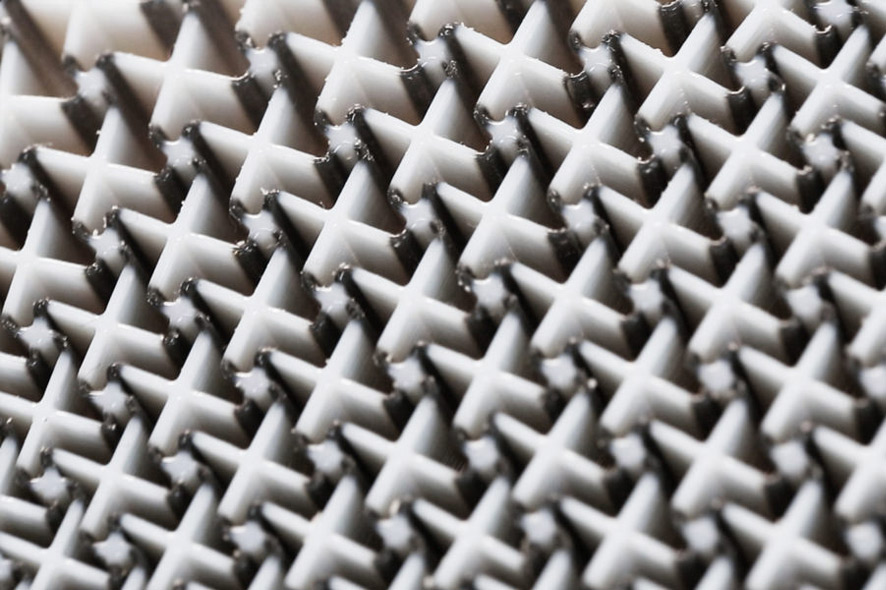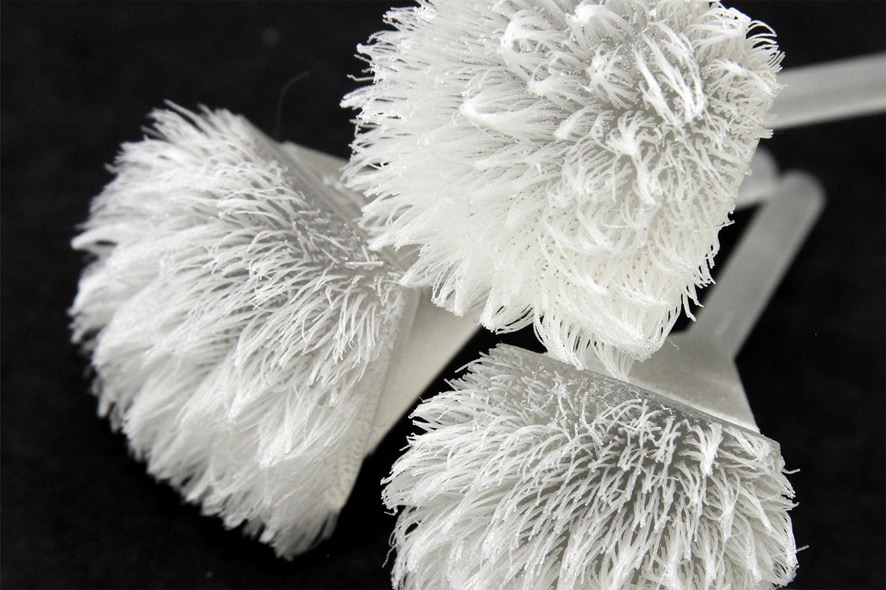The list of materials that humankind uses to produce new objects is by no means carved in stone! Inventive engineers worldwide are busily, incessantly at work creating new materials with new characteristics and capabilities. One of the best examples of such an interdisciplinary team is the staff of the Tangible Media Group at the MIT Media Lab in Cambridge MA, USA. Under the direction of Professor Hiroshi Ishii and in line with his vision of “Radical Atoms,” this “think-factory” has been turning out fascinating new materials for over 20 years now. Just in time for the 2017 Ars Electronica Festival, Hiroshi Ishii is back in Linz to put three of his most recent developments of display in the RADICAL ATOMS exhibition that’s been running at the Ars Electronica Center for a year now. He brings us up to date in this interview.
Prof. Ishii, which new projects have you brought with you from Cambridge?
Hiroshi Ishii: We will introduce three new projects—all of these are under the umbrella of RADICAL ATOMS, the theme of last year’s Ars Electronica Festival. RADICAL ATOMS at the Ars Electronica Center is an ongoing exhibition that consists of two streams: Shape display and programmable materials. Currently, we are showing projects like inFORM that belong to the group of shape displays, whereas interfaces like bioLogic, PneUI and jamSheets are part of the programmable materials category. The three new projects, aeroMorph, Cilllia and kinetiX, also constitute programmable materials. You could say that they’re the new successors of this stream.
Let’s discuss the first project. Tell us what’s so special about aeroMorph.
Hiroshi Ishii: aeroMorph investigates how to make inflatable origami structures with various materials. It’s a perfect example of soft robotics, a very important and great new movement in robotics, and an area in which we’ve learned a lot. It’s kind of an organic-inspired approach, and a stark contrast to the solid mechanical hard robots with their lack of flexibility. Maybe you’ve recently seen the soft robot that mimics the movements of an octopus. This is a new paradigm shift to create a new robotics architecture, which also inspired us. And then there’s the ancient artistic craft of origami that’s inherent in aeroMorph. Of course, origami is a traditional handicraft from Japan, and many mathematicians and computer graphics researchers are fascinated by the arts of origami—for example, Prof. Erik Demaine, a very famous professor at MIT who does origami. Origami has tremendous possibilities. With aeroMorph, a universal bending mechanism is introduced that creates programmable shape-changing behavior in paper, plastics and fabrics. aeroMorph is all about digital fabrication and computational simulation, which is very important because materials do have very complex behavior. They are hard to design structurally to produce the desired movement. aeroMorph contributes to advancing our dream of RADICAL ATOMS.
The next project, Cilllia, produces complex structures like hair and fur with a 3-D printer. But that’s not all that Cilllia can do…
Hiroshi Ishii: Cilllia is an approach to making dense hair structures via 3-D printing. It’s a technical solution and a design innovation of future synthetic fur. But this research project has more features than just being printed. By vibration you can cause an object on top of Cilllia to move—it’s an actuator. But it can also become a sensor, which means that the way people or other objects touch Cilllia can be sensed by analyzing the sound pattern. Vibration is everywhere. When a train comes to a station or a car passes the Ars Electronica Center, these vibrations can be audible—if we are listening—but also visible by kinetic motion, such as pinwheels. Cilllia has a very unique feature optically but also some physical aspects of warmth for clothing. It has a lot of implications to go beyond and to contribute.

Credit: Jifei Ou, Tangible Media Group, MIT Media Lab
The kinetiX project entails objects that undergo complicated morphing processes…
Hiroshi Ishii: Yes, kinetiX is something completely new. They are unique new materials that can be designed on a computer, printed and fabricated. KinetiX introduces a cellular-based material design composed either of rigid plates or rigid bars and elastic hinges. Different combinations of these elements lead to a multitude of shape-changing possibilities. There is a very sophisticated shift change—for mechanical engineering, car design, construction and so on. kinetiX would be the new enabler of digital and physical shape and stiffness-changing materials that push our vision of RADICAL ATOMS to the next level.
“Plastic gave the product designer the infinite flexibility to shape the forms. And digital gave us infinite freedom of dynamic pixel-based expression. RADICAL ATOMS such as kinetiX would yield an impact of a similar magnitude in coming decades!”
You work with new, programmable materials on a daily basis. What trend have you noticed of late?
Hiroshi Ishii: Additive 3-D printing technologies made a significant impact; computational modeling and simulation technologies too. The challenge before us is to invent novel and compelling applications. You may call them “killer apps.” But the more important thing is to let people see that materials are not necessarily frozen, rigid and hard. If you have a vision and ideas, you can make them dance, sing and play on stage.
What advice would you give to artists who are likewise in search of new materials?
Hiroshi Ishii: Don’t paint with a paint brush and inks given by others. Don’t sculpt with clay handed down from others. Invent new materials and tools for your own expression. To do so, stop being artists as end-users or consumers of graphics software made by companies or tools passed on from our mom or dad. You should speak science, technology and design to invent new materials for artistic expression. That is why we do RADICAL ATOMS.
Take a look for yourself at the MIT Tangible Media Group’s new materials in the RADICAL ATOMS exhibition in the Ars Electronica Center. It opens on September 7th and continues to run after the 2017 Ars Electronica Festival concludes. Prof. Hiroshi Ishii will also give an address at the “Art & Science: From Vision to Practice” symposium on September 10th, 10 AM, in POSTCITY.

Hiroshi Ishii (US/JP) is the Jerome B. Wiesner Professor of Media Arts and Sciences at the MIT Media Lab. He joined the MIT Media Lab in 1995, and founded the Tangible Media Group, which he currently directs. Hiroshi’s research focuses upon the design of seamless interfaces between humans, digital information and the physical environment. His team seeks to change the “painted bits” of GUIs to “tangible bits” by giving physical form to digital information. In 2012, he presented the new vision Radical Atoms to take a leap beyond Tangible Bits by assuming a hypothetical generation of materials that can change form and appearance dynamically, becoming as reconfigurable as pixels on a screen.
